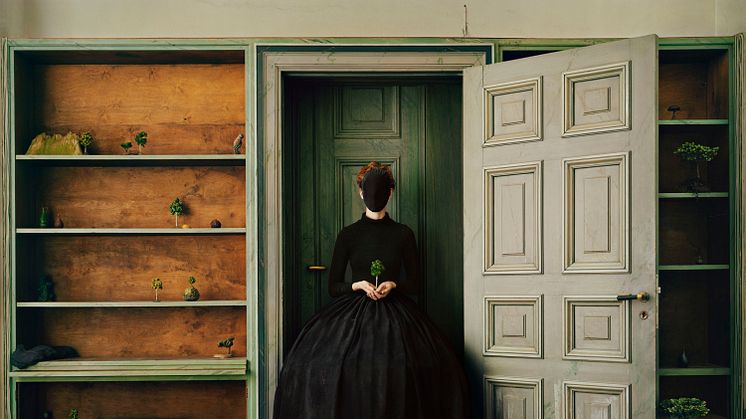
Press release -
Denise Grünstein exhibition at Nationalmuseum next spring
An exhibition on and by photographer Denise Grünstein will open at Nationalmuseum on 19 February. The exhibition is based on the art project that the photographer ran in the empty museum building earlier this year. The suite of images is entitled 1866 after the year in which the museum opened and it is being shown for the first time.
When all the art and the office equipment were removed from the Nationalmuseum building ahead of the renovation work at the start of 2014, Denise Grünstein was given the opportunity to create an art project in the empty space. The result was the suite of images 1866 whose name harks back to the museum’s opening year. But the photographs cannot in fact be fixed in time. It is not possible to tell with any certainty whether they are from the past, the present or the future. As an artist, Denise Grünstein deliberately plays with these ambiguities, allowing the viewer to shift between two poles – the past and the future – that can never be reached and are the opposite of each other. 1866 sees her returning to different themes that she has worked with before, with the empty museum space serving as a background to her world of images.
Denise Grünstein was born in 1950 and early in her career became renowned for her portraits of famous faces in the magazines Månadsjournalen and Elle in the 1980s and 1990s, earning her the soubriquet “the Annie Leibovitz of the Swedish welfare state”. In the 1990s she started to tire of portrait commissions. Faces were too easy and too predictable and she was fed up with the pretentiousness of her models. Instead Denise Grünstein has increasingly delved deeper into her own skill as an artist in a number of art projects that have seen her become one of the foremost figures in gestalt photography. The ability to constantly recreate oneself anew, try out unexpected solutions and push the boundaries of photography makes her one of Sweden’s greatest photographers.
Denise Grünstein has operated in the borderland between free and commercial photography despite the fact that doing so was long taboo. At the same time she constantly stands out from the prevailing norm in contemporary art by asserting romantic imagery in an age that is anything but romantic. She says that she wanted to tell stories from an early age and likens her pictures to scenes pulled out of a fictional narrative. The suites of images do not tell a story with a beginning and an end. Instead they are characterised by an emotional structure in which photograph is added to photograph in a complex interplay.
A total of about 55 works, two of them video works, are on display in the exhibition. Eighteen photographs and one video work are from the new suite 1866. The exhibition also includes a number of selected works from earlier suites of images such as Figure in Landscape (2001), Malplacé (2005), Figure Out (2009), Acute Still Life (2011), Winter (2013) and Wunder (2013).
The exhibition Denise Grünstein – En face is shown in Nationalmuseum’s temporary premises at Konstakademien, Fredsgatan 12, from 19 February to 3 May 2015.
Catalogue
The exhibition is accompanied by a catalogue, containing a wealth of photographs, with text in Swedish and English written by Magnus Olausson and Bo Nilsson.
Press contact
Magnus Olausson, Director of Collections and Exhibitions, magnus.olausson@nationalmuseum.se, +46 8 5195 4371
Hanna Tottmar, Press Officer, hanna.tottmar@nationalmuseum.se, +46 767 234632
Caption
Denise Grünstein, Looking at the Overlooked, from the series 1866, 2014.
Categories
Nationalmuseum is Sweden’s premier museum of art and design. The collections comprise older paintings, sculpture, drawings and graphic art, and applied art and design up to the present day. The museum building is currently under renovation and scheduled to open again in 2017. In the meantime, the museum will continue its activities through collaborations both in Sweden and abroad as well as temporary exhibitions at the Royal Swedish Academy of Fine Arts, Fredsgatan 12, Stockholm. Nationalmuseum collaborates with Svenska Dagbladet, FCB Fältman & Malmén and Grand Hôtel Stockholm. For more information visit www.nationalmuseum.se.

